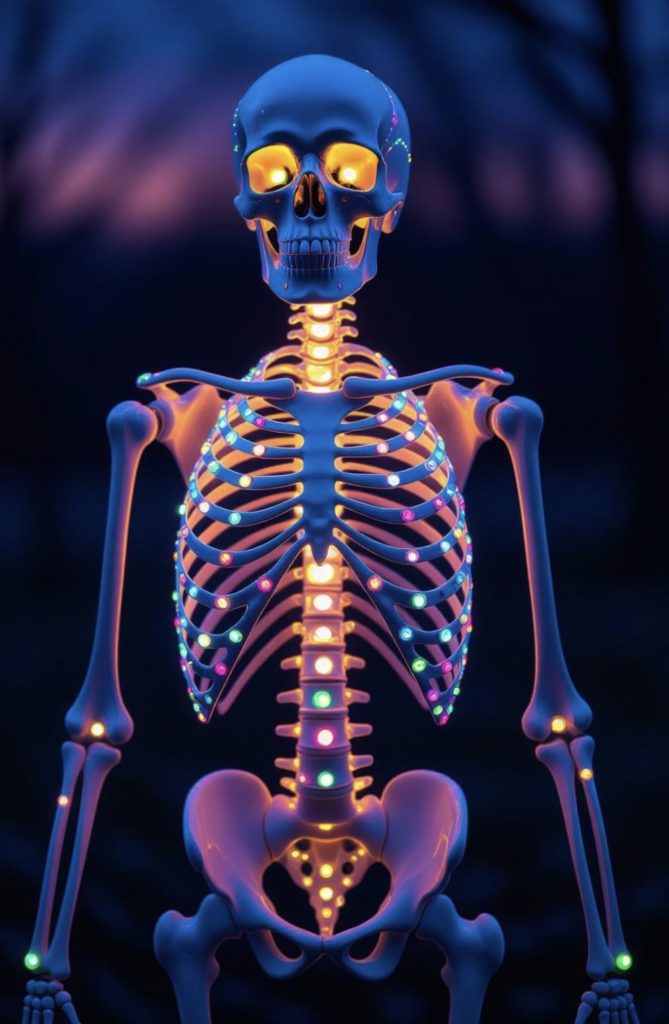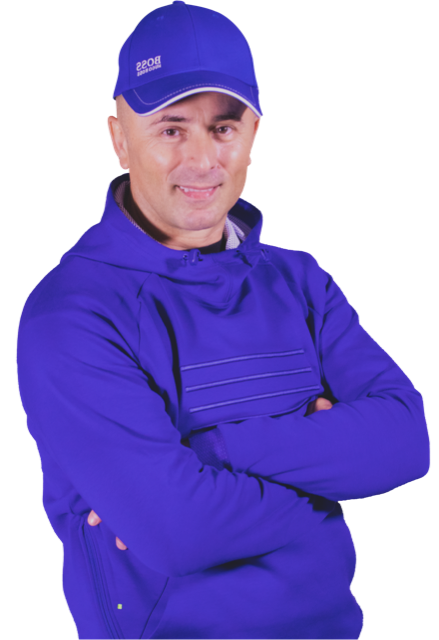The human body: The ninth wonder of the world
The skeletal system is an integral part of the body, with over 200 bones that must be well-maintained. Easy enough to keep something you can see, right? Ignorance isn’t always bliss; you will suffer when you take this incredible, intricate structure for granted. You’re sitting up reading this right now, and your skeletal system keeps you upright. I am writing this using my hands and fingers; I could not convey these words without my trusted skeleton enabling me to tap as I type.
Bones need to meet; the joints introduce them by either fixing them together or helping them to manoeuvre; these joints are either fixed or fibrous. There are two ways in which a connection is made, and when maintained, it will form a healthy, sustained relationship. Poor posture, emotional stress and injury can affect this unique union, so it is important to ‘do right’ by it and listen to it when it speaks; it will have its voice that cannot be ignored.
What is impressive about the skeletal system is the significant variation between a man’s and a woman’s. A woman’s pelvis is broader than a male’s in that it cradles the growing body of a baby, one part of the structure that embraces life. So, what should you know about this beautifully engineered structure? It likes to move freely without stumbling or getting stuck; it needs a full tank of fuel, known as synovial fluid. Synovial fluid works as a lubricant between the joints and bones, allowing them to glide instead of grind, and keeps the skin supple beneath it.

Common joint problems
Osteoporosis
As with all structures, the skeletal system can suffer from ageing and a battering from the strong wind that is everyday life, depending on how you live your life. Osteoporosis, which causes the bones to become brittle, is one of the ailments that can lead to prolonged periods of immobility; age is a primary factor, but it does not mean time is up.
Osteoarthritis
It is the most common form of joint disease and affects, in particular, women who are going through menopause. It is hard enough to accept that your body is changing hormonally, and now you have to face pain and swelling from degenerating joints and loss of joint function. Massage and exercise can help lessen the pain of Osteoarthritis. It may not be curable, but it can be managed; ‘the change can be good’.
Scoliosis
Adolescence has its issues, too! Degenerative diseases are not always a result of getting older, which is even more reason to remember the importance of the skeletal system. Scoliosis is a condition in which the spine curves to one side or the other. Signs may include uneven hips, slow nervous reactions and protruding ribs or shoulder blades. There is no clear cause for scoliosis, but a chiropractor can still take several steps to alleviate pain and limit its effects.
Stress
We should inevitably touch on the ‘stress’ word. Think about it: when you are feeling low, you look down; you walk along with hunched shoulders as tight as a coiled spring. That tightness and tension can lead to postural problems. The spine also feels stressed, bent over, and unable to stand tall because of how you feel. Many people struggle to maintain the correct posture, and some are unaware that their standing or sitting position is detrimental to their health. Not only does this feel uncomfortable, but it can also appear awkward to anyone watching you. Slouched shoulder, hunched back…sounds painful, too! Correcting yourself without the proper guidance can be equally as harmful.
What’s holding you up?
- Take notice of any unusual feeling or twinge
- Headaches? Think about your posture.
- Stiff, painful wrists? What job are you doing? Notice if you are repeating your movements.
- Lower back pain? You sit down most of the day at a computer for hours, eating lunch and dinner and watching TV. Why? And what’s your position?
Explore, don’t Ignore
It’s Saturday, and you’re at the barber’s or hairdresser’s. Your locks want to look good, so you have a new hairdo; your nail extensions look a little shoddy, so you replace them with new ones. So why do we concentrate on the exterior when the interior is more important? To get to where you want to be, you need to be able to walk, run and sit comfortably in the salon chair.
How can you help your skeletal system?
Lousy posture is often habitual for many people and becomes a routine or natural habit. Rehabilitation is complex, but rebuilding is possible. Look at yourself in a mirror; when walking past a reflective window, take a moment to assess your appearance. Now, relax and adopt a stance with minimum muscular effort…it will transform you.
Walking exercise
Avoid a slouched posture, with your head down and your shoulders stooped and tense.
Aim to keep the balance of the head on top of the spine, freely poised, and with the shoulders relaxed. Feel yourself transferring your weight onto alternate feet as you walk.
How to sit correctly at the desk
Aim to hold your head freely poised, your shoulders relaxed, your knees slightly apart (crossed legs can twist the pelvis and spine), and your feet firmly on the floor.
Avoid sitting with your head down, your shoulders rounded, and your stomach compressed, which can result in restricted breathing, or try to sit so straight that your back becomes unnaturally curved.
Prevent postural pain
Avoid Slouching over the desk—stomach tight, breathing restricted, and arms tense.
Aim to sit correctly and bend forward at the hip joint, keeping your bottom firmly in the seat. Do not grip a pen too tightly or tense your arm when typing, writing or working at a word processor or computer. Ensure your chair is chosen or adjusted to a comfortable height relative to the desktop.
How can spinal therapy help the skeleton?
A qualified and experienced spinal therapist can apply precise treatment and stretching manipulation to restore structural balance and improve joint movement, allowing them to function correctly.
